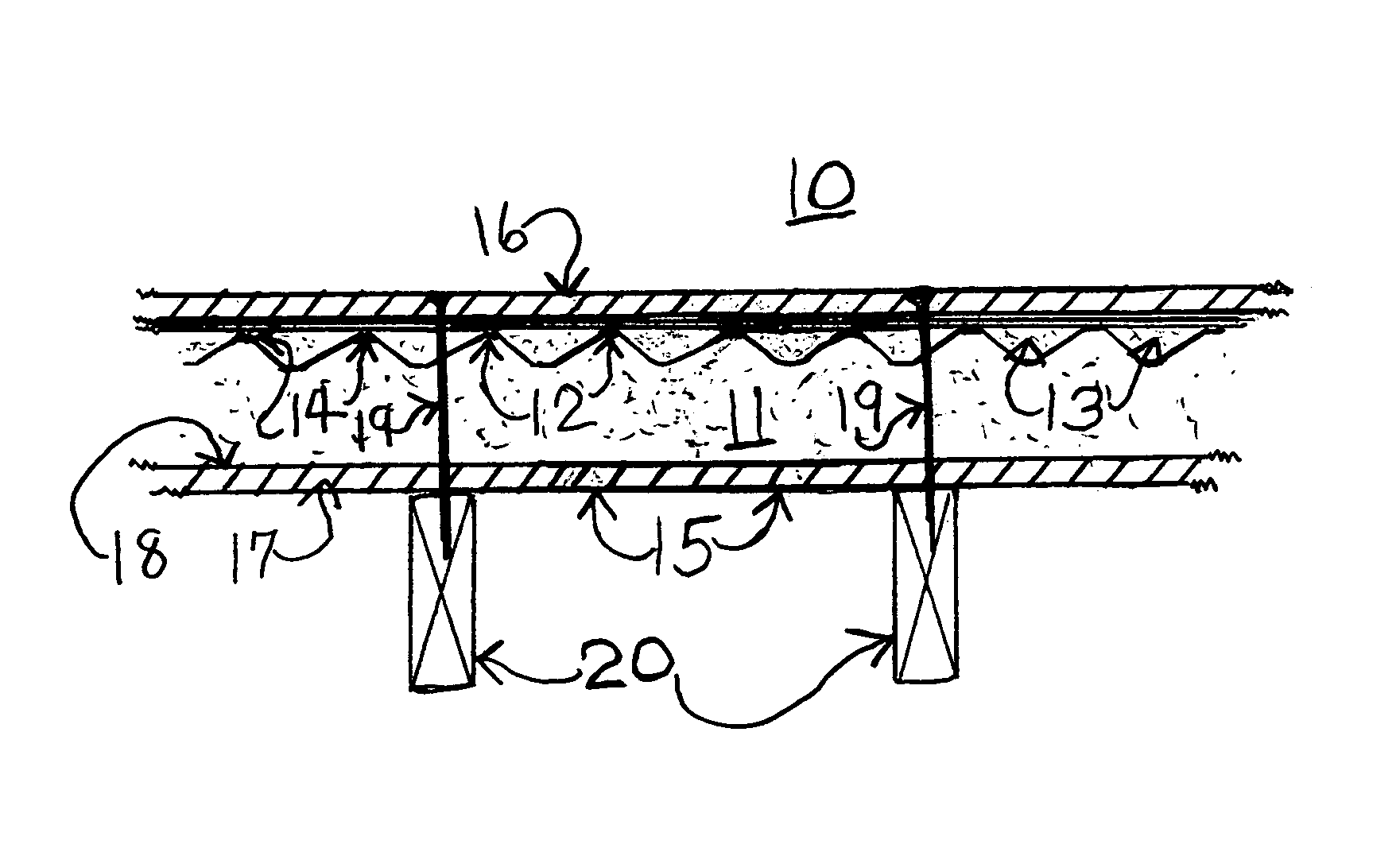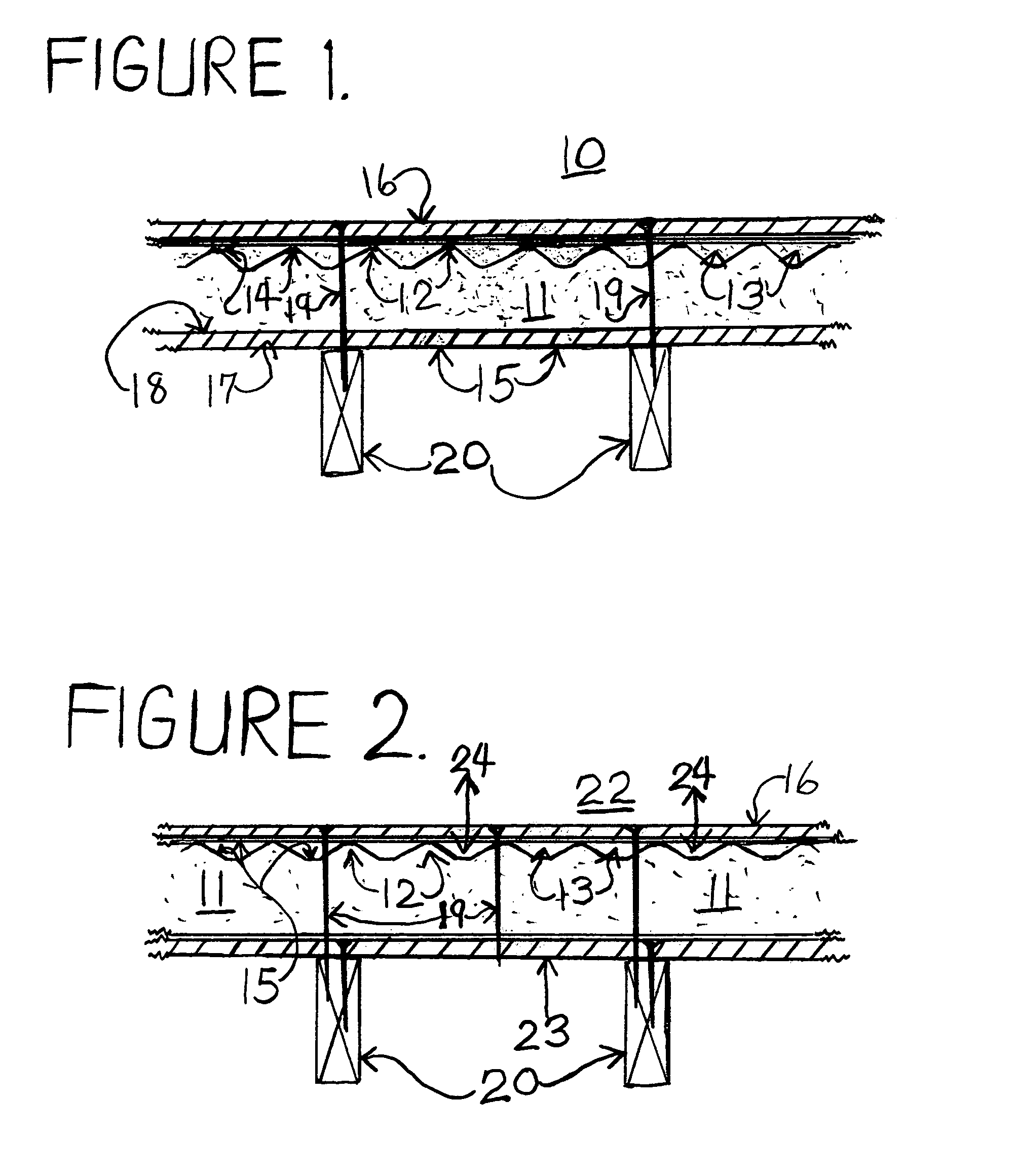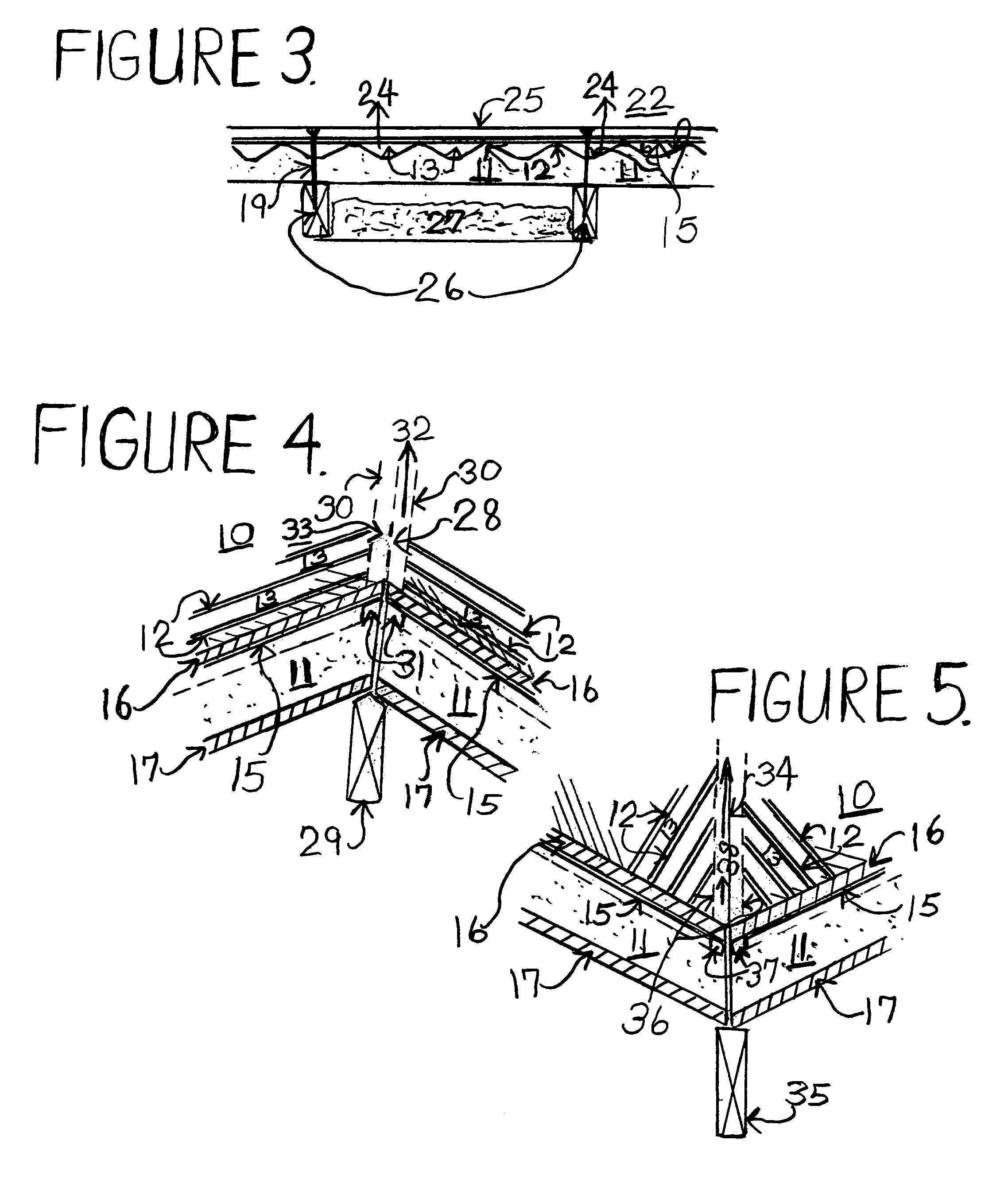Insulating and venting assembly
a technology of venting assembly and insulation, which is applied in the direction of ventilation system, lighting and heating apparatus, heating type, etc., can solve the problems of ineffective moisture venting, ineffective moisture venting, and ineffective radiant barrier surface loss of a considerable amount, if not all, of radiant barrier ability to reflect back. , to achieve the effect of economic and effective moisture venting
- Summary
- Abstract
- Description
- Claims
- Application Information
AI Technical Summary
Benefits of technology
Problems solved by technology
Method used
Image
Examples
Embodiment Construction
[0023]Shown in FIG. 1 in a cross sectional view is the radiant insulating and venting assembly 10 components used in a new roofing application. Shown is a rigid foam sheet 11 with the non-collapsing air spacer columns 12 and air spaces 13 between the air spacers. The outer ends of the air spacers 14 can be are attached to the radiant barrier low emissivity surface 15. The radiant barrier low emissivity surface 15 is adhered to the upper rigid board 16, or the low emissivity surface 15 can be adhered to the surface of the air spaces 13. A low emissivity surface 15 can also be attached to the lower face of the lower rigid board 17, that is attached to the lower face 18 of the rigid foam sheet 11. Nails, screws or other attaching mechanisms 19 adheres the insulating and venting assembly 10 to the roof rafters 20. Air and moisture flows 21 up through the air spaces 13.
[0024]FIG. 2 shows in a cross sectional view the insulating and venting assembly 22 used in a re-roofing or retrofit roo...
PUM
 Login to View More
Login to View More Abstract
Description
Claims
Application Information
 Login to View More
Login to View More - R&D
- Intellectual Property
- Life Sciences
- Materials
- Tech Scout
- Unparalleled Data Quality
- Higher Quality Content
- 60% Fewer Hallucinations
Browse by: Latest US Patents, China's latest patents, Technical Efficacy Thesaurus, Application Domain, Technology Topic, Popular Technical Reports.
© 2025 PatSnap. All rights reserved.Legal|Privacy policy|Modern Slavery Act Transparency Statement|Sitemap|About US| Contact US: help@patsnap.com



